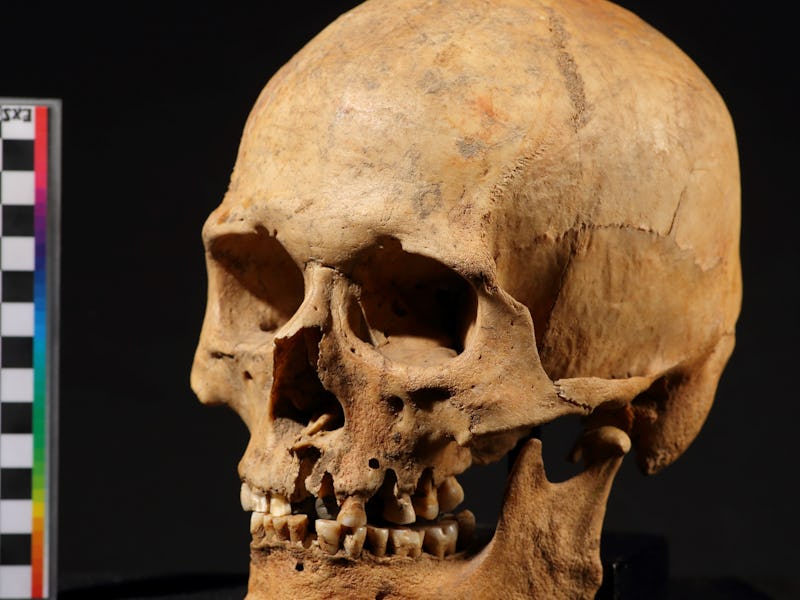Ancient Siberian DNA upends our understanding of Native American migration
Native Americans journeyed back to North Asia from North America, study finds

Family trees provide a clear example of how DNA evolves as it passes down generations. But it also reveals clues to the complicated history of human migration. Take the Indigenous peoples of the Americas. DNA evidence suggests groups of Asians migrated to Beringia, the land and maritime region between Russia and North America, around 20,000 years ago (maybe well before) and then gradually made their way to the Americas in waves.
Now, new evidence suggests that Native Americans may have traveled back to North Asia as well. In a study published Thursday in the journal Current Biology, an international group of researchers discovered an ancient Siberian hunter-gatherer society dating back thousands of years ago, and that some other ancient Siberian peoples (as well as their descendants) harbor Native American ancestry.
Here’s the background — Much of what we know about ancient Siberians comes from both archaeological and genetic evidence. Two major groups of ancestry are recognized across North Asia: ancient North Eurasian, from the skeletal remains of a young child who died 24,000 years ago in south-central Siberia, and ancient Northeast Asian ancestry, discovered from skeletal remains in the Russian Far East dating back to the Neolithic period, which lasted from around 4,300 B.C. to 2,000 B.C. There’s also a third group of ancient Paleo-Siberians who share a kinship with Native Americans living today, according to earlier studies.
Beringia spans both the land and maritime area between Russia’s westernmost region of Siberia and North America.
This information, however, hasn’t been enough to piece together a cohesive family tree. A major reason for this is simply a limited number of ancient DNA analyzed from the Altai region, a mountainous crossroads between Russia, China, Mongolia, and Kazakhstan.
“We describe a previously unknown hunter-gatherer population in the Altai as early as 7,500 years old, which is a mixture between two distinct groups that lived in Siberia during the last Ice Age,” Cosimo Posth, a geneticist at the University of Tübingen and senior author of the study, said in a press release. “The Altai hunter-gatherer group contributed to many contemporaneous and subsequent populations across North Asia, showing how great the mobility of those foraging communities was.”
The authors write in the paper that there is a 12,000-year gap between what genomic history scientists have gleaned so far from the few ancient humans remains archaeologists managed to collect in recent years. This gap has led to questions about how ancient humans interacted with each other and what those interactions have meant for their descendants, including Native American groups.
What’s new — The researchers analyzed DNA from the skeletal remains of ten individuals dating back 7,500 years ago (the youngest 5,500 years ago) obtained from three regions in North Asia: the Altai-Sayan region, which is situated between the Altai and Sayan Mountains in Inner Asia; the Russian Far East, the easternmost part of Russia; and the Kamchatka Peninsula, which is surrounded on one side by the Bering Sea.
The researchers found the DNA of these hunter-gatherers was unique, resulting from the mixture of paleo-Siberian and ancient North Eurasian ancestry. These individuals may have been the ancestors of other groups in North and Inner Asia like Lake Baikal hunter-gatherers in Siberia to a cache of naturally preserved mummies found in China’s Tarim Basin dating back to the Bronze Age, which lasted from around 2,500 B.C. to 700 B.C.
Skeletal remains from ancient Siberian graves like the one pictured have been used for genomic analysis.
While migration from North Asia to the Americas was thought to be largely one-way, the researchers found that Native American-related ancestry contributed around 50 percent to northeastern Siberian DNA dating back to the Iron Age, the gene flow of which probably occurred between 5,500 and 4,400 years ago. Genetic sharing was also observed among present-day Koryaks, an indigenous group located in the Kamchatka Peninsula, and is estimated to have occurred as recently as 1,500 years ago.
Interestingly, some of the skeletal remains from the Russian Far East shared about a quarter of their genome with ancient people dating back to Japan’s Jomon prehistoric period around 13,000 to 300 B.C. This probably isn’t a whole lot surprising since Japan does share a maritime border with the Russian Far East.
Why it matters — The fact that some of the skeletal remains containing ancient Northeast Asian genetic ancestry reached farther west than what scientists had previously observed — about 1,500 kilometers — might suggest that the peoples of North Asia were highly connected as early as 10,000 years ago.
“This suggests that human migrations and admixtures were the norm and not the exception also for ancient hunter-gatherer societies,” Posth said in the press release.